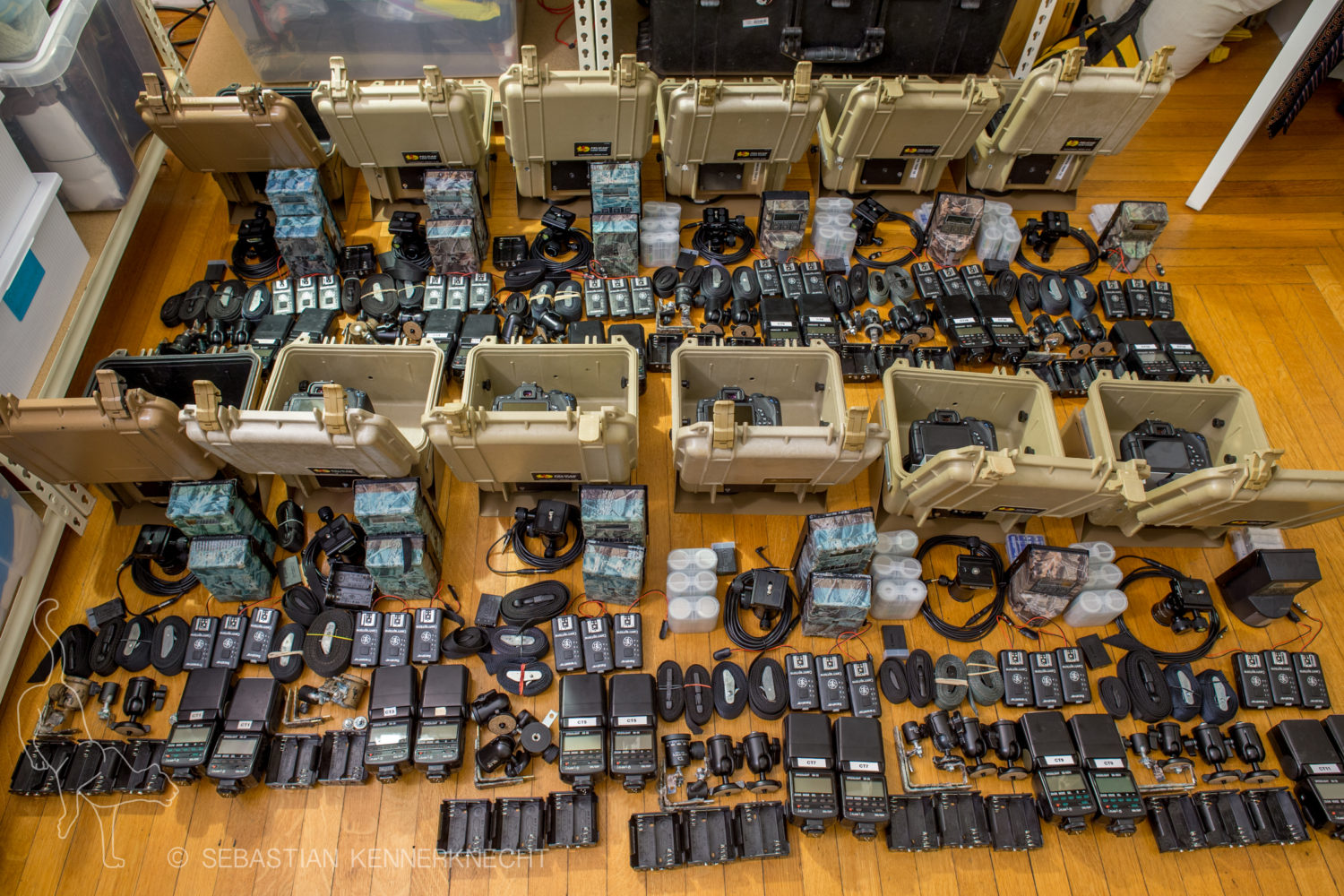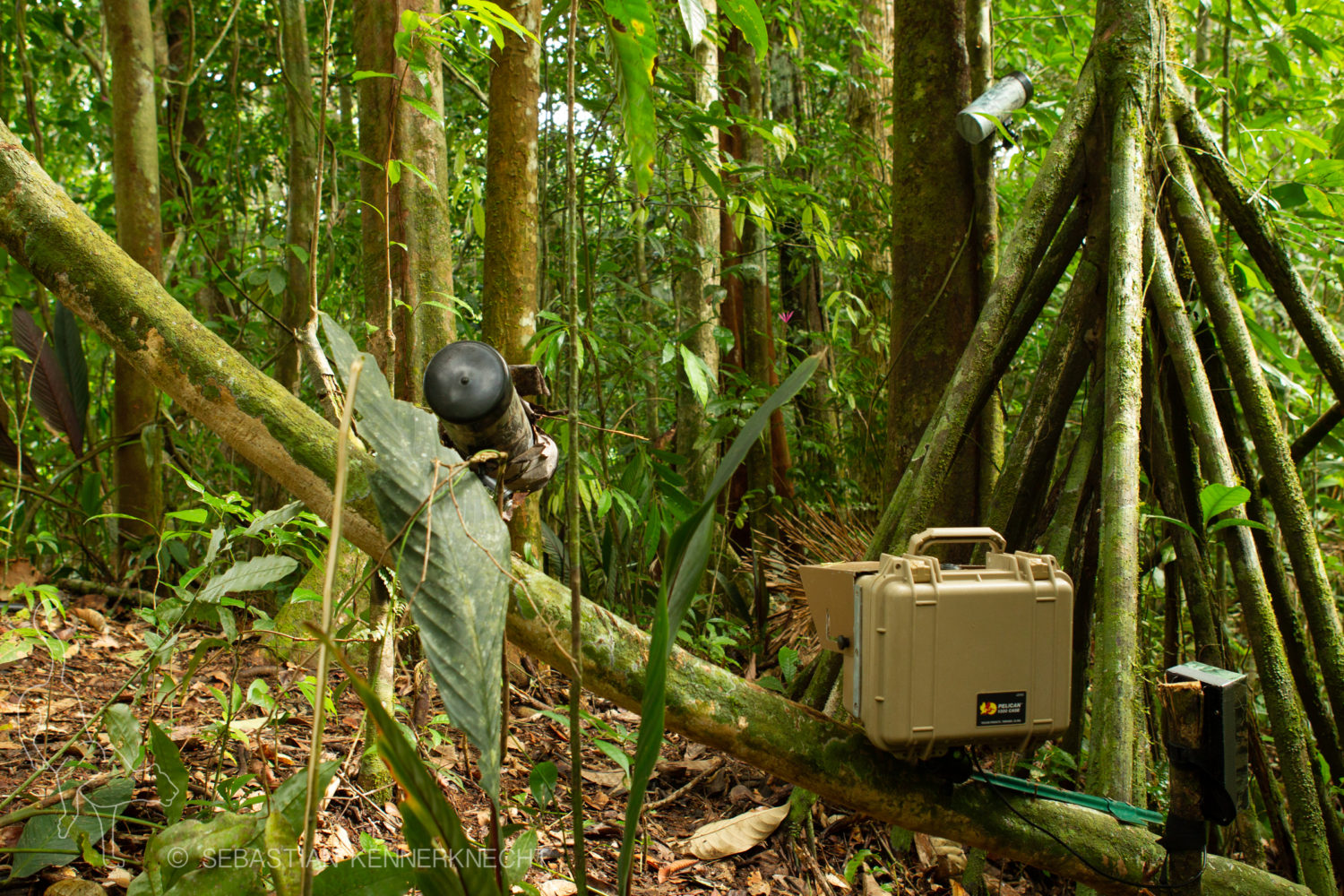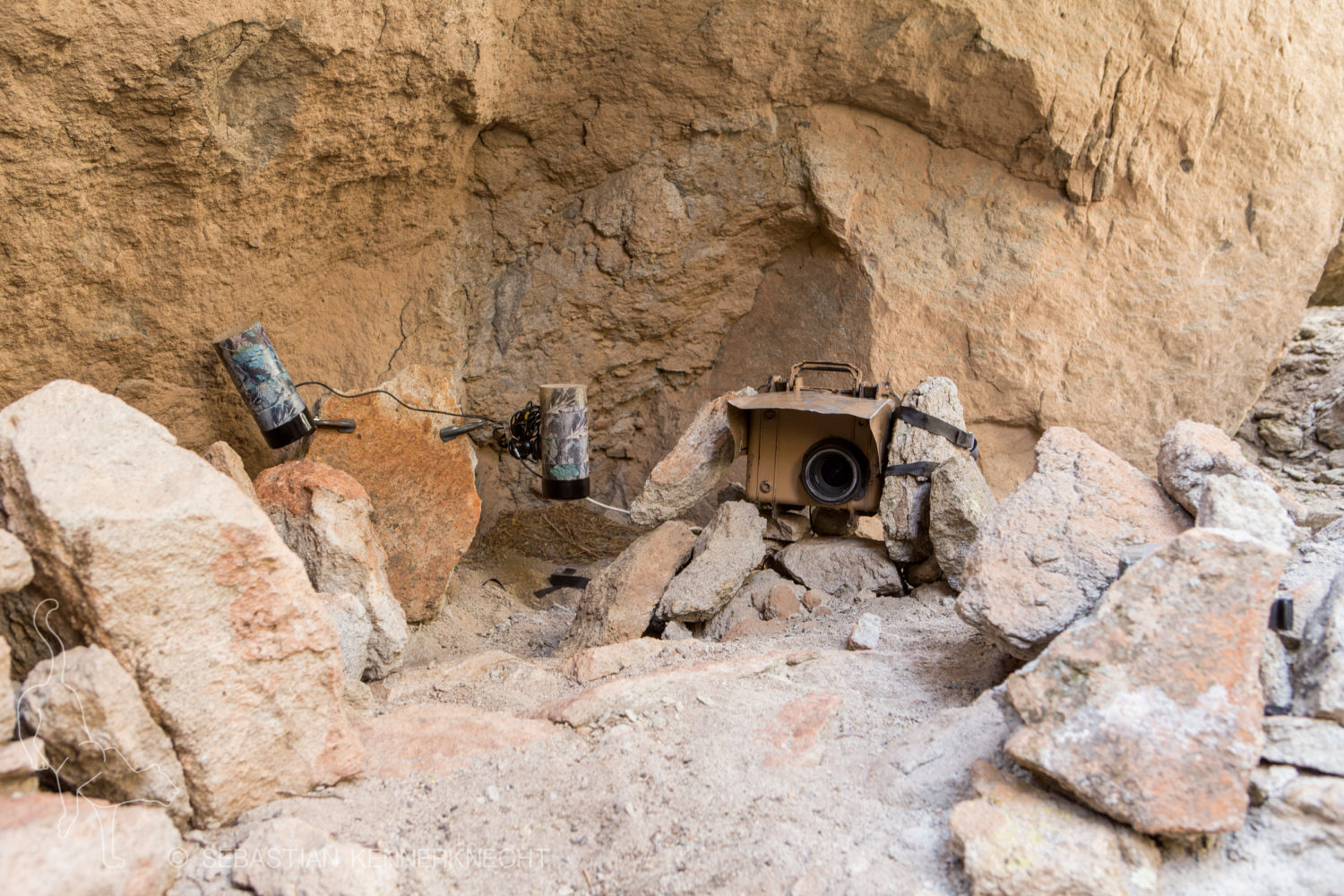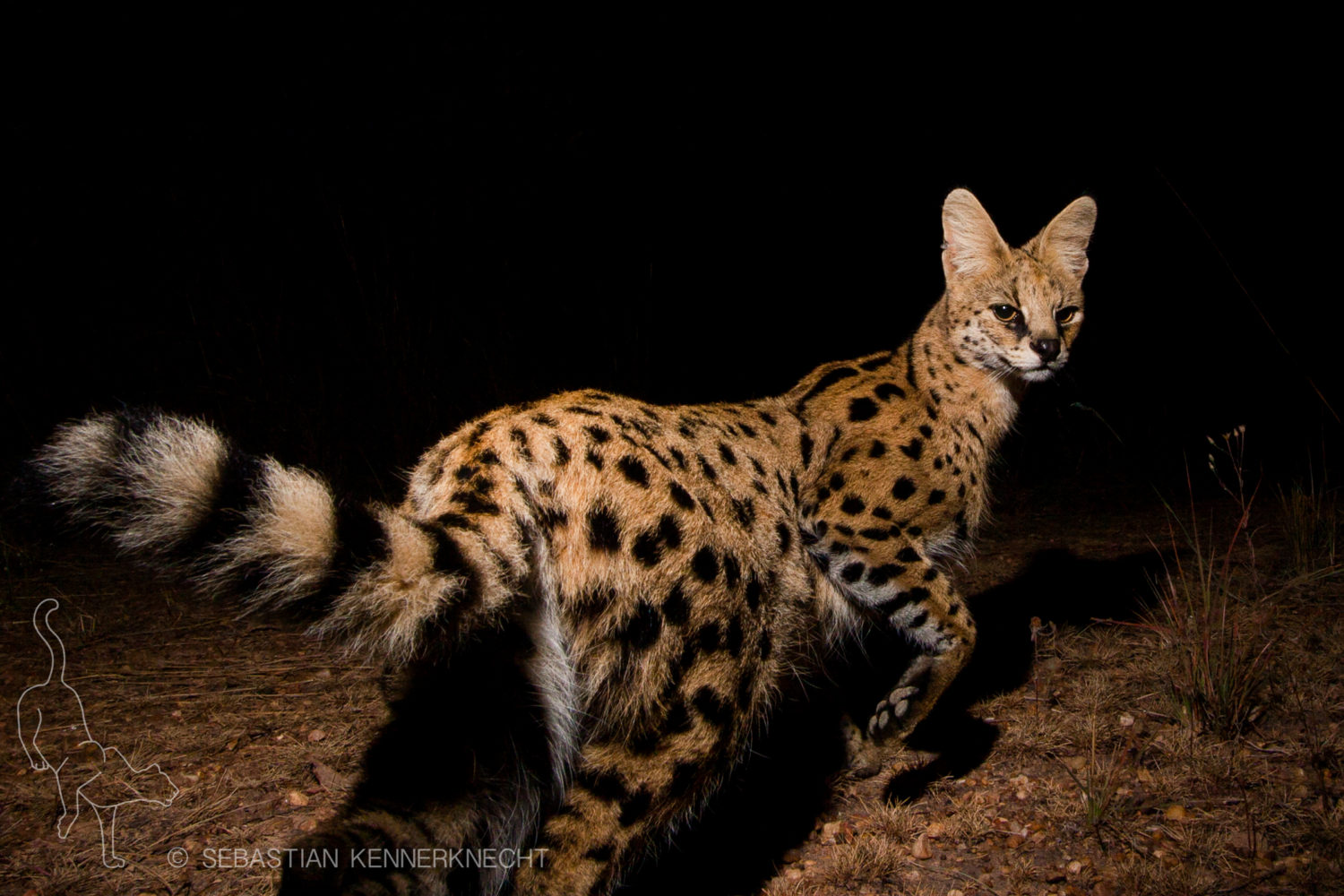Voltaic first met Sebastian Kennerknecht at an International League of Conservation Photographers event several years ago. He is a wildlife and conservation photographer with a specific focus on wild cats and his photographs have appeared in The New York Times, National Geographic Kids, The Economist, Science and many others.
All images copyright by Sebastian Kennerknecht.
We asked him a few questions about how he sets up his camera traps.
What is the technical setup of your camera trap?
I currently own and run fourteen SLR camera traps. They are a lot of work to maintain, but they can provide unique photographs of very elusive species or new compositions on more common animals. In the end, a camera trap can be as simple as a camera, hooked up to a sensor that triggers the camera when an animal walks by.

Custom built SLR camera traps by Sebastian Kennerknecht
Included Parts
Camera: Canon Rebel T6i
Lens: Canon 10-22mm
Flashes: Nikon SB-26, Nikon Sb-28, or Nikon Sb-80
Sensor: Trailmaster 1550 (sadly no longer in business), Camtraptions PIR senor V2, Cognisys Scout
Wireless Triggers between camera and flashes: Camtraptions wireless triggers
Waterproof Housings for camera and flashes: Homemade from many different components.
What do you look for in a location for your traps?
Placing camera traps comes down to knowing the ecology of the species you want to photograph. Wild cats often scent-mark in the same locations for example. So, for example, upon finding a boulder that has obviously been used over and over by a wild cat (because of discoloration on the rock and the distinct smell of cat pee), I will set up on or near that boulder to catch the wild cat when it comes to mark its territory once more.

Camera Trap in Rainforest

Camera trap, Abra Granada, Andes, Northwestern Argentina
What are you working on next?
For my next project I am actually going to focus on pumas in the US. Due to the current pandemic my usual international assignments have been put on hold. It’s the perfect opportunity to work close to home. I will be traveling around the western parts of the US, using my camera traps to photograph mountain lions. My solar kit will come into effect here as well as I will need power solutions while on the road and in the backcountry.
Anything else you would like to share about your work?
For me, conservation is the highest priority goal. Photography is my best tool to help achieve it. I love pushing for greater and greater photos that actually make a difference in terms of protecting the wild cats I love so dearly and the habitats in which they live.

Serval (Leptailurus serval) at night, Kafue National Park, Zambia
How does solar power help your work in the field?
I simply could not do my work without the support of solar, and for my field needs the voltaic Arc 45W Solar Laptop Charger Kit is the perfect solution. It powers my MacBook Pro, SLR and mirrorless cameras, and all my accessories. It’s lightweight enough to easily transport into the back country and allows me to stay off the grid for weeks if not months at a time.
Editor’s Note: We also want to get some of the camera traps running off of our small solar panels for longer term deployments. Stay tuned.


Leave a Reply